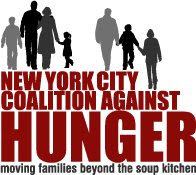 Agencies receiving commodity foods from the federal Emergency Food Assistance Program (TEFAP) are getting less food despite their calculated entitlements, recent reports show.
Agencies receiving commodity foods from the federal Emergency Food Assistance Program (TEFAP) are getting less food despite their calculated entitlements, recent reports show. The $189 million federal program allots commodity foods like dried beans, pasta and canned fruit to emergency food networks. The dollar amount of many agencies’ entitlements has remained the same while TEFAP costs have risen nearly 19% in the past year, with staples like medium-grain rice increasing by as much as 70% over the past two years. “With very few exceptions, the increases are staggering,” says Melinda Annis, senior vice president of food programs at California Emergency Foodlink.
The USDA has also cancelled many TEFAP bonus food purchases, which previously made millions of dollars of commodity foods free to agencies beyond their calculated entitlement. Recent bonus food cuts include canned fruit and fruit juices.
The cuts mean barer shelves for food pantries, who have found it much harder to provide customers with a balanced supply of food. The recent shortages further illustrate how “difficult it is for food banks across the nation to plan an even and consistent flow of food to serve a growing population of hungry people” said Annis.



